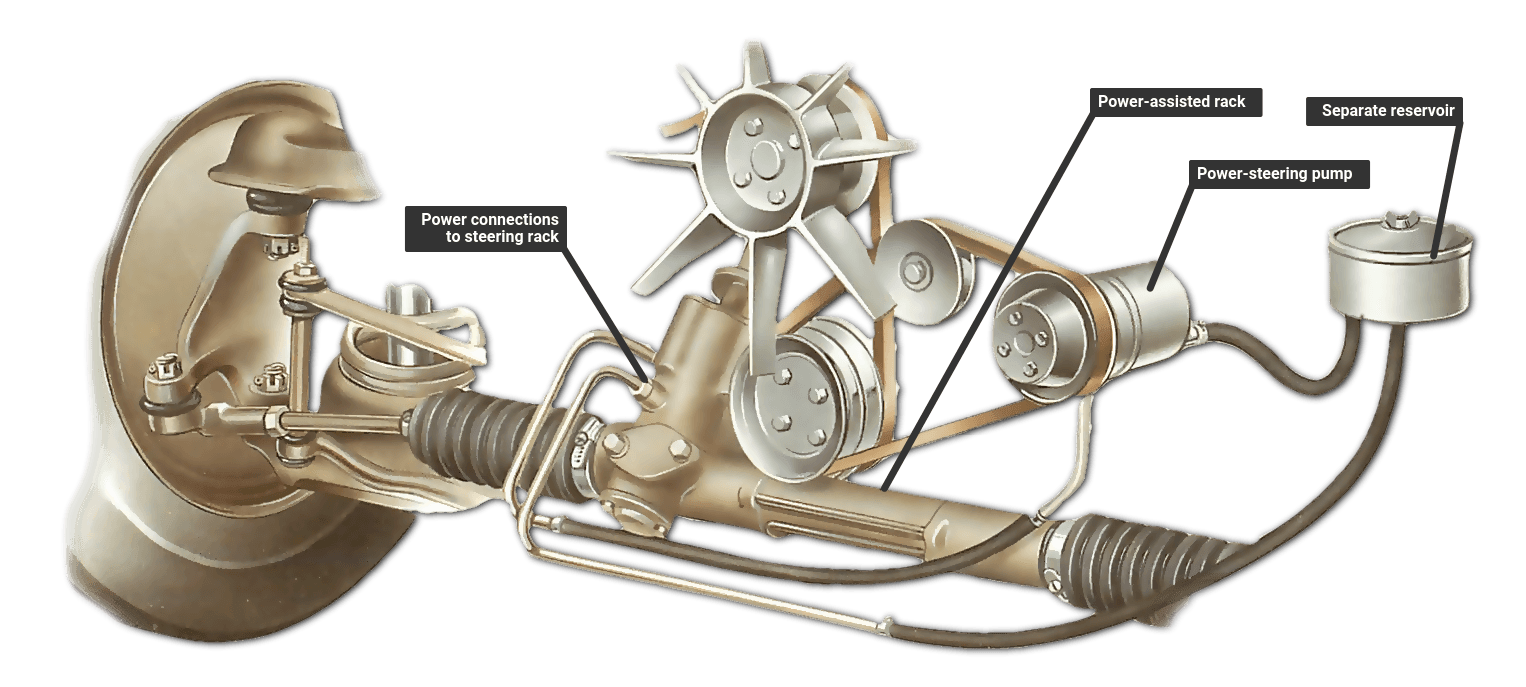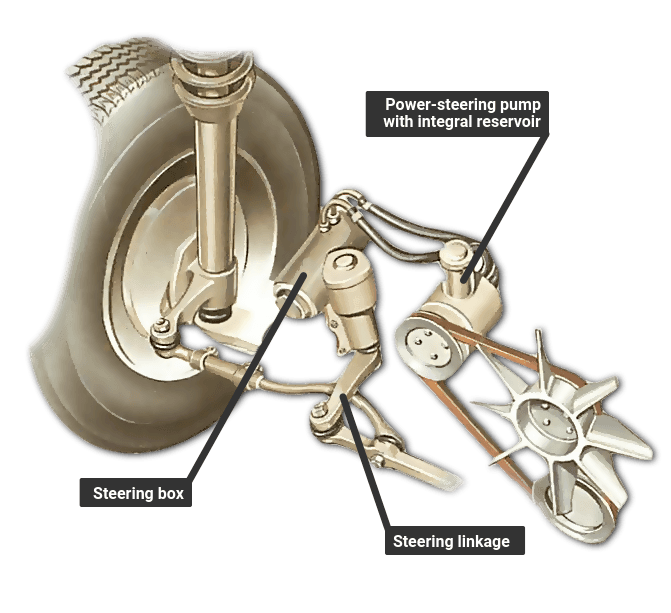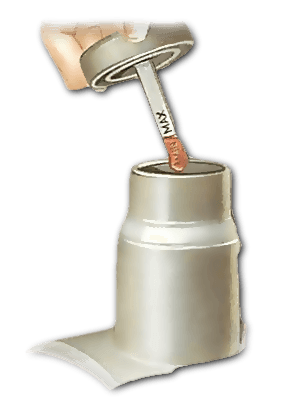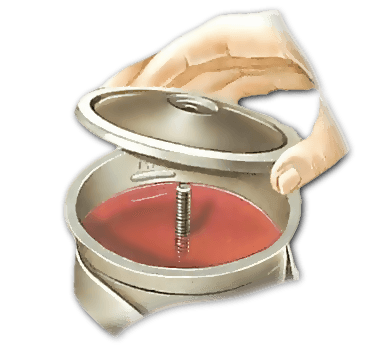Checking power-assisted steering
The Video Course teaches you everything about modern cars.
Check a power-steering system at least twice a year - more often if recommended by the car handbook, or if the steering becomes heavy or jerky.

Complete failure makes the steering very heavy - you can feel the effect by trying it with the engine switched off and the car stationary.
Check the fluid level in the reservoir and, if it is low, look for leaks. Leaks may let air in as well as fluid out, so the system may need bleeding.

The reservoir may be set in the top of the pump , which is mounted on the engine and driven by a belt from the crankshaft . It may be separate - find it by tracing the hoses from the pump.
Usually there are two level marks in the reservoir. The lower one is used when the fluid is cold, and the upper one when it is hot. Read the level with the car on flat ground ; remember to replace the reservoir cap.
If the level is low, there is probably a leak. Check all the hose joints: they should be tight, but not cutting into the hose ends. Check that the hoses are not cracked, perished or chafed. Look for leaks oozing sticky fluid.
Check any rigid pipework attached to the pump, reservoir and rack (or steering box). Look for leaks from the pipe unions and for sticky fluid trails. If none is immediately visible, clean the parts with engine degreaser.
Have a helper start the car and turn the steering wheel from lock to lock while you look again for leaks.
If you find a leaking joint, tighten it and top up the reservoir. Normally, automatic - transmission fluid is used, but consult the car handbook. Bleed the system to remove any air bubbles.
The drive belt may need adjusting or replacing (See Adjusting and replacing a power-steering drive belt ). Any more serious maintenance should be done by a garage.
Checking power-steering fluid


Make sure the car is standing on flat ground. There may be hot and cold level marks inside the top of the reservoir.
If not, the level may be up to the top of a circular filter plate fitted to the centre spindle ; look in the car handbook to find whether this is the hot or cold level.
On a centre-spindle reservoir, the whole lid is removed by unscrewing a wingnut.
Alternatively, there may be a dipstick on the bottom of the cap. Remove the cap, wipe the stick with a lint-free rag, screw back fully and remove again to read the level.
How to bleed power steering
Put on the handbrake and keep the car in neutral gear ; if the car is an automatic, put it in Park before starting the engine.
Run the engine until it reaches normal working temperature. Leave it idling.
Turn the steering from lock to lock several times to heat the fluid. Switch off the engine.
Look into the reservoir; if there are bubbles, there is air in the system. Top up the fluid to the hot level and replace the cap.
Jack up the front of the car with both wheels just off the ground. Turn the steering from lock to lock three times.
Check the fluid level, topping up if necessary. Start the engine.
Slowly turn the wheels from lock to lock three times. Check the fluid level again, and top up if necessary. Note the exact level when you have done this. Replace the reservoir cap and switch off.
Lower the car and restart the engine. Turn the steering from lock to lock five times, then centre it exactly. Switch off, and look in the reservoir.
There should be no bubbling or frothing. The fluid level should not have risen by more than a small amount.
If the fluid is bubbling or has risen much, repeat the whole process from the start.
The Ultimate Car Mechanics video course
Learn everything about modern cars from our new video series.
Learn more >-
We build a Mazda MX5 Miata from scratch
We start by tearing down and then rebuilding the whole car.
-
Every part explained
There's ridiculous detail on every part. Clearly and easily explained.
-
All modeled in 3D
We've created the most detailed 3D model ever produced so we can show you everything working.






